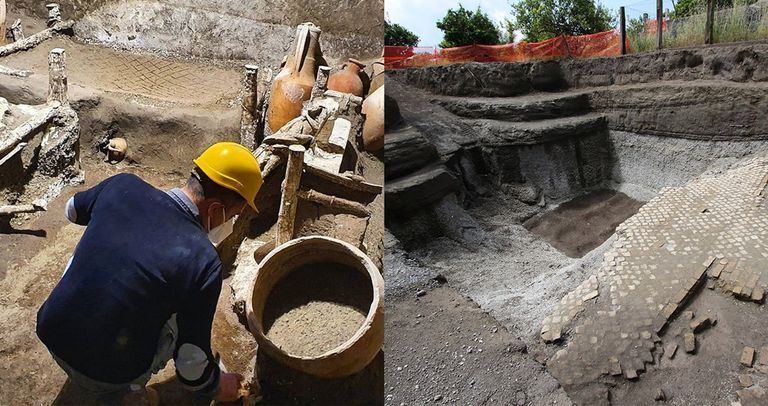Archaeologists In Pompeii Broke Into A Forbidden Room And Then Froze At The Sight Within
It’s almost impossible to walk through the ruins of Pompeii without being struck by a certain melancholy. Here’s a city stuck in the past, fixed in place by a layer of hardened ash that swept over it following the devastating volcanic eruption of Mount Vesuvius. The somber nature of the place is inescapable, and a new discovery has made it even more poignant. Archaeologists have discovered a room in the ruins — one that tells a dark and touching story.
Civita Giuliana
The archaeologists had been excavating Civita Giuliana, a residential area less than half a mile beyond the boundaries of Pompeii proper. Their predecessors originally began work at this place more than 100 years ago, which quickly led to some remarkable discoveries. Most notably, perhaps, a sizable villa in the neighborhood gave researchers enormous insight into life during Roman times.
The villa
Beginning in 1907, archaeologists excavated this villa and eventually managed to uncover 15 different rooms inside. Each of these was then classified into one of two different categories: farming and living quarters. The latter, obviously, would have been for general use, whereas the former were for working. In this case, people would’ve been making wine or vegetable oils.
An urgent matter
Civita Giuliana’s a fascinating place that can tell us a lot about ancient Roman life, but there’s a problem. The area has been ravaged by looters, who’ve secretly tunneled into the site and taken off with valuable artifacts. And this sorry situation’s forced archaeologists to prioritize excavations here as a matter of urgency.
Amazing discoveries
While it certainly isn’t ideal that archaeologists have been forced to work at Civita Giuliana in this way, the results have been undeniably fascinating. Some amazing discoveries have occurred there over the past few years, and arguably none are as incredible as the room that was announced in November 2021. This space is special, as it tells a tragic story that’s often ignored by historians.

